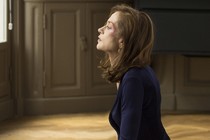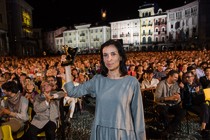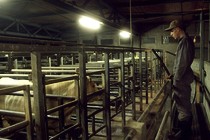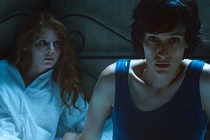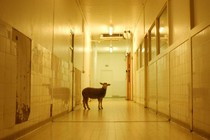LOCARNO 2016 Filmmakers of the Present
Still Life: Scenes from the abattoir
- LOCARNO 2016: Maud Alpi brings the camera down to the level of the eyes of animals to paint a portrait of the sinister world inside the walls of a slaughterhouse
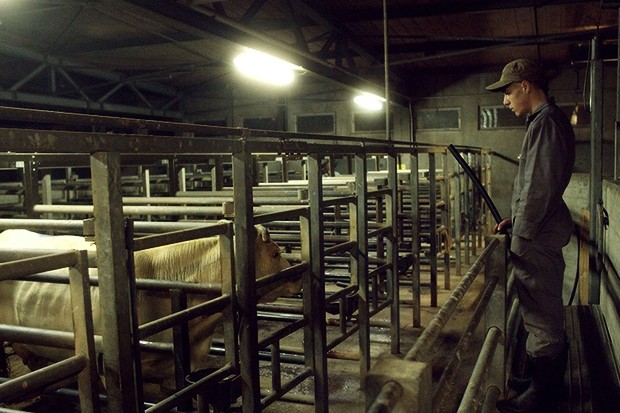
“I could have ended up somewhere worse, somewhere I couldn’t have you with me.” With these words - spoken not by a lover to his beloved, but by a young man to his dog - the tone is set for Still Life [+see also:
trailer
film profile]. The first full-length feature from French director Maud Alpi, presented in the Filmmakers of the Present section of the 69th Locarno International Film Festival, takes as its premise an honest portrayal of the relationship between humans and animals, who are eventually transformed into characters capable of understanding, enjoyment, suffering and even tears. In this delicately crafted film, somewhere between documentary and fiction, this relationship is placed at the very heart of a story set in a grisly place where one half eradicates the other: the abattoir.
Here, the two protagonists try to find their path. A young punk living in a dilapidated house (amateur actor Virgile Hanrot) shares everything he has with his dog, Boston; a Labrador who behaves more like a human being than many of the people in their lives. While his owner works the night shift at the abattoir, driving cows, pigs and sheep towards the slaughter chambers with an electric prod, the dog waits, tied to a pipe, listening and howling in response to the harrowing laments of his fellow creatures. Alpi brings the camera down in line with the animal’s eyes, to show us how he perceives the things that are happening around him. The photography adapts to his movements and his way of looking at the world, becoming unstable and blurry, with an emphasis on close-up shots that capture the beauty of the animals as glimpsed through the slanting shadows of the abattoir.
The contrast between light and shadow provides both a visual and thematic resource for the film: the scenes inside the abattoir interweave with exterior shots, in which the dog and his master share meals, dips in the river and even the mornings after the latter has had sex with his girlfriend. In this way, Still Life places humans and animals on a practically equal level: naked, driven by instinct and behaving in very similar ways. The young protagonist, aware of this sense of sameness, tries to explain to his dog how the abattoir works, in a powerful scene in which the animal watches, stricken, as a cow being led to her death gives birth to a calf: “No animal gets out of here alive.”
But it is the humans themselves, shown in the film discussing the possibility of creating new animal species less onerous to kill, who lack a certain understanding: the dog is able to move forward, to find refuge among the ruins of man’s creations, thriving and living peaceably in a new place without the need to confront this predatory threat. A new place that (to the sounds of Leonard Cohen and his Show Me The Place) Alpi introduces as a welcome relief from the never-ending struggle between life (animal) and death (at the hands of humans).
Still Life was produced by Mezzanine Films in co-production with Rhône-Alpes Cinéma and M141. International sales are being handled by MPM Film.
(Translated from Spanish)
Did you enjoy reading this article? Please subscribe to our newsletter to receive more stories like this directly in your inbox.















